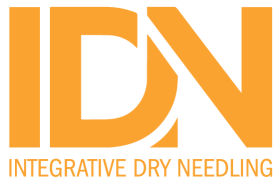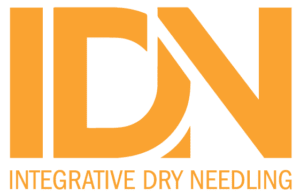The old adage “You can’t see the forest through the trees” rings true when we consider treatment of the human body. Local treatment can be effective, especially in acute cases. What happens when the presenting condition is no longer acute, and is moving toward chronic or recurrent? The local trigger point treatment model can be less effective and possibly interfere with the bigger picture of the source of the dysfunction. In prior blog posts I addressed the 3 S’s (symptomatic, segmental, systemic) of the IDN system and now would like to link those with the 3 I’s. Acronyms are being used primarily to improve retention of the important considerations when deciding on the how and why to utilize dry needling in clinical practice.
The 3 I’s describe the “problem” with musculoskeletal pain and dysfunction, Inflammation, Irritation, and Inhibition. The 3 I’s do not occur in isolation, they are coupled with one another in an injurious situation. Each of the I’s occur locally (Symptomatic), Segmentally and Systemically. If pain and dysfunction are treated solely at the site of the symptoms “you may get to the point but will miss the system,” as we like to say. The human body works as an integrated organism and must be viewed and treated in this way. The human body shares neurology and circulation and to believe that an injury remains local to the site, absent an effect on the rest of the body, is limiting your treatment effect. This reminds me of the “guru” based treatment models of the 1980’s and 90’s. Clinicians would utilize a specific manual therapy paradigm and would become cult-like in their treatment approach and if it failed the patient was labeled “not-fixable”. Since that time the PT profession has become more eclectic in viewing the body as greater than the some of its parts. This eclectic view is in perfect alignment with the IDN system of dry needling. The days of focusing on a point as the source of pain and dysfunction are numbered and it is time that we begin to move toward a more reliable and global assessment and comprehensive treatment. The global thinking of the 3 I’s and the 3 S’s is the model that sums up both the injury of the system and a comprehensive treatment. The dilemma lies in the fact that we do not fully understand the experience of pain, dysfunction or the physiological mechanisms of dry needling. This is today’s reality and if we can embrace it, we can continue to move our thinking forward.
The more you read about Inflammation the more it becomes apparent it is centered at the root of pain and dysfunction in the human body. This creates Irritation of peripheral nerves that can create the sensory experience of pain and the motor effects that drive neuromuscular Inhibition. If inflammation could be managed more effectively we may be better able to mitigate its effect on both pain and motor dysfunction. This is not a revelation but a basic fact of treating most musculoskeletal conditions. Following injury, the inflammation may reside in local tissue acutely, however as time goes on and the body is unable to clear the inflammation, it can become more widespread and involve more of the nervous system such as in chronic conditions. Neurogenic inflammation results from bioactive chemicals activating sensory neurons, which in turn activates the release of sensitizing chemicals from peripheral nerve terminals. (Irritation) This bidirectional process from local peripheral tissue to the CNS causes a more widespread inflammatory process. The Inflammation that produces pain and dysfunction can be local, segmental and or systemic, which is what creates the challenge. This may explain why the modern continuing education seminars now focus on assessing and treating the body as a whole and less focused on identifying the specific tissue that is at fault. The tissue specific diagnoses that aim identify the “involved” structure are faulty reasoning and should be reconsidered. Sizer et al.’s paper on sound clinical reasoning outlines the need for a multifactorial construct in encouraging innovative practice. Acknowledging the lack of diagnostic accuracy in clinical testing, palpation and even patient report makes treatment design challenging to say the least. That may have lead some to attempt to create a cookbook style of treatment where it is assumed that a common grouping of signs and symptoms will all respond to a specific treatment regimen. We all know how that worked out and essentially lead back to the “not fixable” conclusions for patients that did not fit or respond favorably to the treatment mold they were put into.
IDN’s 3 S’s concept of treatment provides no preconceived notions of the source of the 3 I’s instead provides a foundation upon which to build a treatment plan.
Symptomatic (local)- This is certainly the most obvious type of pain and dysfunction to treat as the patient tells you it hurts “here”. This is usually an acute to sub-acute injury and the area may be swollen with a loss of motion.
Segmental– Manual therapy clinicians understand that when treating musculoskeletal pain and dysfunction the spinal component cannot be ignored. They have been trained to first “clear” the spine to reduce the likelihood of missing a segmental problem based on a peripheral complaint. The segmental effects of needling help to reduce the symptoms of the Local (symptomatic) points.
Systemic– This is where the most confusion and even misunderstanding of mechanism is experienced. In the human body there is shared neurology, circulation and physiology that we cannot separate into pieces or parts. We base our systemic treatment on homeostatic points that are key neurological areas in the body that have stronger therapeutic signaling to the CNS and are present in reproducible locations and patterns. The innervation zones of homeostatic points are extensions of major peripheral nerves that are present in consistent locations around the body based on the predictable anatomy of the peripheral nervous system. This is in stark contrast to locating the highly variable myofascial trigger points.
In some patient presentations (acute symptoms) treating just symptomatic points (local) may be all that is needed to get the desired effect. As you move from the acute patient to the sub-acute and into the chronic, the need to expand the treatment methods becomes empirically evident by the reduced clinical results. Assessment tools, such as quantitative sensory testing, may be used to identify the possible central mechanism driving the symptoms. We believe it is relevant to address the 3 S’s together, not placing a higher value on one or the other because clinically this approach has a better chance to address the 3 I’s of pain and dysfunction.


